#imageprocessing
Explore tagged Tumblr posts
Text
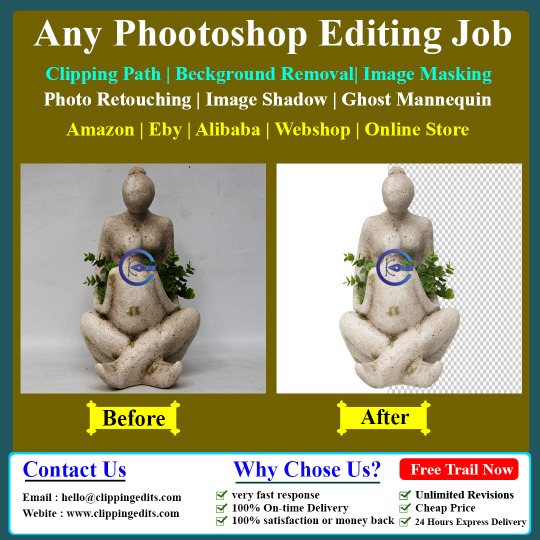
High Quality Photo Editing Service Contact US: [email protected] https://join.skype.com/invite/v8WpX8d4z7eb WhatsApp:+8801921022065 Website: https://clippingedits.com/
#clippingedits#clippingPath#backgroundremoval#imageEditing#imagesmasking#PhotoEditing#ImageProcessing#neckjoint#clipping#imageResizing#AdobePhotoshop#graphicdesign#retouching#shadow#ecommerce#stopmotion#ecommeceimageediting#clippingpathservice#imagebackgroundremoval#amazonimageediting#AmazonProductPhotography#removebackground
4 notes
·
View notes
Text
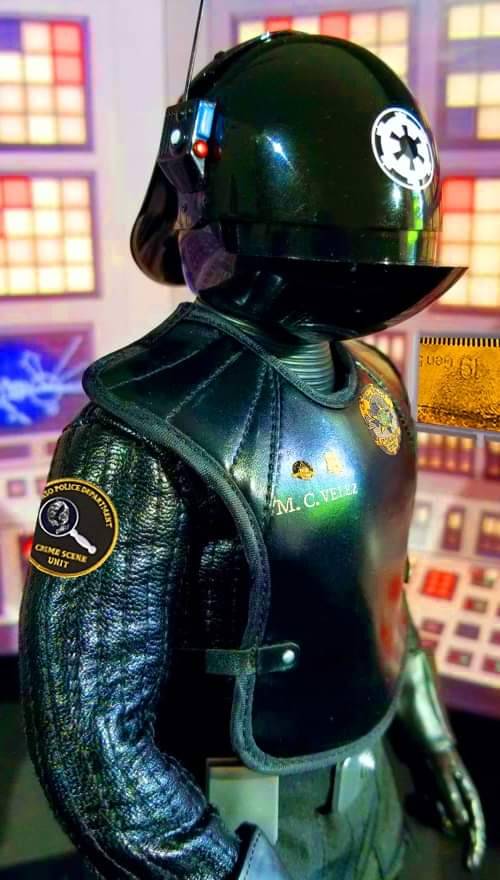
6 notes
·
View notes
Text
AI in Image and Video Processing Data Analysis Tools
"AI in Image and Video Processing Data Analysis Tools" explores how artificial intelligence is transforming image and video data analysis. By leveraging deep learning and computer vision, AI tools can analyze, enhance, and interpret visual content, making it easier to extract valuable insights. These advanced tools are widely used in industries like healthcare, security, and entertainment to automate tasks and improve accuracy.
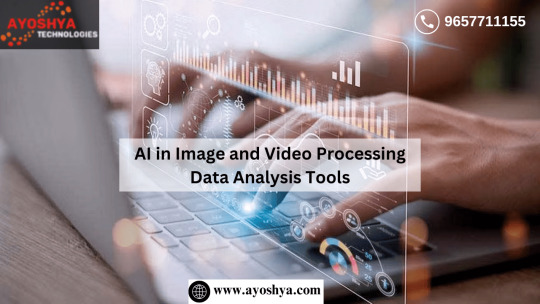
#AIinDataAnalysis#ImageProcessing#VideoProcessing#AIinTech#ComputerVision#DataAnalysisTools#MachineLearning#ArtificialIntelligence#AIDeepLearning#VisualDataAnalysis
0 notes
Text
Dive into the magic of Flux Canny! This tool from Flux1.ai uses a Canny edge detector to enhance the underlying structure of your images. Here's how it helps create more realistic characters from animated ones: [Insert Before/After Image or Video]
How Flux Canny Works:
Edge Detection: Identifies and refines edges and contours.
Detail Enhancement: Boosts subtle details, adding depth and realism.
Structure Refinement: Improves the overall structure, making it more human-like.
0 notes
Text
Focused on helping business with image processing services in a variety of industries, we work in business-centric ways to develop image processing solutions that cover a range of services such as image scanning, indexing, enhancement and conversion to impact business growth.
Visit: https://www.veetechnologies.com/services/it-services/artificial-intelligence/image-processing.htm
0 notes
Text
Focused on helping business with image processing services in a variety of industries, we work in business-centric ways to develop image processing solutions that cover a range of services such as image scanning, indexing, enhancement and conversion to impact business growth.
Visit: https://www.veetechnologies.com/services/it-services/artificial-intelligence/image-processing.htm
0 notes
Text
Focused on helping business with image processing services in a variety of industries, we work in business-centric ways to develop image processing solutions that cover a range of services such as image scanning, indexing, enhancement and conversion to impact business growth. Visit: https://www.veetechnologies.com/services/it-services/artificial-intelligence/image-processing.htm
0 notes
Text
Focused on helping business with image processing services in a variety of industries, we work in business-centric ways to develop image processing solutions that cover a range of services such as image scanning, indexing, enhancement and conversion to impact business growth.
Visit: https://www.veetechnologies.com/services/it-services/artificial-intelligence/image-processing.htm
0 notes
Text

Top 20 MATLAB Project Ideas List
1. Face Recognition System: Establish an approach that identifies faces, and then checks the information provided with image processing techniques.
2. Speech Signal Analysis: Which are then stored for analysis of features such as pitch and intensity as well as individual phonemes.
3. Object Detection Using Deep Learning: Use the machine learning technique to teach the neural network that it is working with to detect objects on images.
4. Simulink for Electric Vehicles: Models and simulates electrical vehicle behaviour.
5. Digital Image Watermarking: Acquire and remove watermarks as a form of protection for material posted on the Internet.
6. Automatic License Plate Recognition: Recognize license plates of the vehicles.
7. Heart Rate Monitoring System: Measure the privacy using ECG signal analysis of the heart rate of a patient.
8. Cryptography System: Further create a mechanism for encryption and decryption.
9. Renewable Energy Modelling: Did or designed systems for the generation of solar or wind energy.
10. Weather Forecasting Tool: Forecast climate conditions from spread market datasets based on time-line records.
11. Edge Detection: The raw imagery requires the creation of new algorithms aimed at detecting edges in images.
12. Signal Compression: Use even some of the technological advance techniques such as wavelet transform for data compression.
13. Stock Market Prediction: Forecast up or down movements in stock prices with artificial intelligence.
14. Lane Detection for Vehicles: Detecting road lanes in videos.
15. Audio Noise Reduction: Remove noise from audio frequency and sounds.
16. Medical Image Analysis: Interpret MRI or CT scan images.
17. Robotics Path Planning: Teach robots how to move in and around with minimal wastage of time.
18. Fingerprint Recognition System: A biometric authentication should be developed.
19. Data Clustering Warning: Use k-means to cluster datasets.
20. Traffic Flow Simulation: Simulate and simulate traffic systems.
These projects cover the basic to the intermediate level and provide numerous ways to implement the use of MATLAB.
#embedded#matlab#projects#engineering#students#imageprocessing#imageanalysis#takeoffedugroup#takeoffprojects
0 notes
Text
The Top 10 Image Processing Service Companies Leading the Industry in 2025

In today’s technology-driven world, Image Processing is revolutionizing industries by transforming raw visual data into actionable insights. From automating quality checks in manufacturing to enhancing diagnostic accuracy in healthcare, image processing services are pivotal in driving efficiency and innovation. Numerous companies worldwide have emerged as leaders in Digital Image Processing, leveraging advanced technologies to cater to diverse industrial needs.
Here’s a detailed look at the top 10 companies excelling in Image Processing and why they stand out in 2025.
1. Vee Technologies
Vee Technologies leads the way in offering innovative and customized image processing services for various sectors. Their expertise spans image enhancement, object detection, and remote sensing, helping industries achieve precision and efficiency.
The company is also a pioneer among Facial Recognition development companies in India, providing advanced biometric systems to enhance security and customer engagement. Vee Technologies’ contributions to Digital Image Processing India are instrumental in transforming industries such as healthcare, retail, and logistics. Their team combines technical excellence with deep industry knowledge, ensuring that clients receive cutting-edge solutions tailored to their needs.
2. Infosys
Infosys is a global IT leader with a strong foothold in Digital Image Processing. The company’s AI-driven solutions focus on applications like video analytics, 3D modeling, and image segmentation. Infosys has successfully implemented image processing solutions in sectors such as retail, automotive, and healthcare, helping businesses improve operational efficiency and customer experiences.
3. Wipro
Wipro’s image processing services are built on a foundation of innovation and cutting-edge technology. The company specializes in real-time image processing, noise reduction, and object tracking for applications like manufacturing and surveillance. Wipro’s ability to integrate AI and machine learning into their solutions has made them a reliable partner for businesses looking to modernize their operations.
4. Cognizant
Cognizant has emerged as a key player in Image Processing, offering advanced solutions like facial recognition, video content analysis, and pattern recognition. Their services are widely used in logistics, security, and e-commerce. Cognizant’s commitment to leveraging AI and data analytics ensures high accuracy and efficiency in all their image processing projects.
5. HCL Technologies
HCL Technologies is a prominent name in Digital Image Processing India, providing top-tier services for industries like healthcare, automotive, and geospatial analysis. Their offerings include 3D reconstruction, image annotation, and defect detection, helping businesses improve product quality and streamline operations.
6. Tata Consultancy Services (TCS)
TCS combines its expertise in AI, cloud computing, and Digital Image Processing to deliver innovative solutions for global clients. Their services include fraud detection, personalized marketing, and video analytics, with applications in e-commerce, finance, and public safety. TCS’s ability to handle large-scale projects with precision makes them a trusted partner for businesses worldwide.
7. Accenture
Accenture’s image processing services focus on improving decision-making and operational efficiency through AI-powered solutions. The company excels in image classification, pattern recognition, and real-time analytics, catering to industries such as logistics, healthcare, and retail. Accenture’s commitment to innovation has positioned it as a leader in delivering high-value image processing solutions.
8. Tech Mahindra
Tech Mahindra is one of the leading Facial Recognition development companies in India, providing robust image analytics and processing services. Their expertise in biometric solutions and security systems has made them a go-to partner for government projects, public safety initiatives, and retail applications. Tech Mahindra’s focus on integrating AI into image processing ensures that their solutions are both effective and future-ready.
9. IBM
IBM leverages its AI and cloud capabilities to deliver powerful Image Processing solutions. From video content analysis to object detection and image classification, IBM’s services are widely used in industries like media, healthcare, and transportation. IBM’s ability to handle complex image processing tasks with precision and efficiency sets it apart from its competitors.
10. Capgemini
Capgemini provides comprehensive image processing services, focusing on automation, accuracy, and real-time analytics. Their solutions cater to industries such as telecom, manufacturing, and logistics, helping businesses improve efficiency and reduce costs. Capgemini’s expertise in AI and data analytics ensures that their image processing services deliver tangible results for their clients.
Conclusion
The demand for image processing services continues to grow as businesses recognize its potential to drive innovation and efficiency. From enhancing security through facial recognition to improving healthcare diagnostics, Digital Image Processing is shaping the future across industries.
The companies listed above, including leaders in Digital Image Processing India and globally, are paving the way with cutting-edge solutions that cater to diverse needs. As industries evolve, the role of Image Processing in transforming operations and improving outcomes will only expand.
Whether you're a small business or a global enterprise, partnering with a reliable image processing service provider is essential to stay competitive in today's data-driven world.
#ImageProcessing#ImageProcessingServices#DigitalImageProcessing#AI#MachineLearning#DeepLearning#FacialRecognition#ImageAnalysis#ObjectDetection#VisualComputing
0 notes
Text
Vee Technologies' Image Processing Services
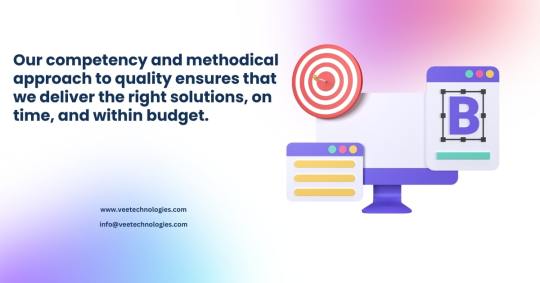
Focused on helping business with image processing services in a variety of industries, we work in business-centric ways to develop image processing solutions that cover a range of services such as image scanning, indexing, enhancement and conversion to impact business growth.
Explore More: https://www.veetechnologies.com/services/it-services/artificial-intelligence/image-processing.htm
#ImageProcessing#ImageProcessingServices#DigitalImageProcessing#AI#MachineLearning#DeepLearning#FacialRecognition#ImageAnalysis#ObjectDetection#VisualComputing#VeeTechnologies
0 notes
Text

Graphic Aid’s Model to Flat-lay conversion service specializes in transforming images of clothing worn on models into flat-lay photographs that showcase the garment on its own. This process begins by digitally removing the model and any background, isolating the clothing item to create a clean, minimalist canvas. Next, the garment’s shape and contours are carefully adjusted to retain a natural, lifelike look, ensuring the fabric appears as it would if laid flat. To enhance realism, details such as stitching, fabric texture, and patterns are highlighted, making the garment look three-dimensional and true-to-life. Precise color correction ensures that each garment’s colors are accurately represented, and soft shadows are added to give depth and a professional finish.
For e-commerce or catalog presentations, flat-lay images offer a clean and focused presentation, free from distractions, so the product itself takes center stage. This approach is especially valuable for brands seeking a cohesive and polished visual style across all product images, as Graphic Aid ensures consistency in lighting, angle, and overall look. The result is a high-quality, ready-to-use image that captures the garment’s details, making it perfect for digital and print display.
#FlatLayPhotography#ProductPhotography#EcommercePhotos#FashionFlatLay#ImageEditing#PhotoRetouching#ProductDisplay#ClothingPhotography#FashionEditing#ApparelPhotography#ProductImages#BrandConsistency#EcommerceReady#PhotoEnhancement#StudioQuality#ImageProcessing#VisualBranding#CleanDesign#ProductPresentation#ProfessionalImages
0 notes
Text
Transform Your Grainy Photos into Stunning Masterpieces
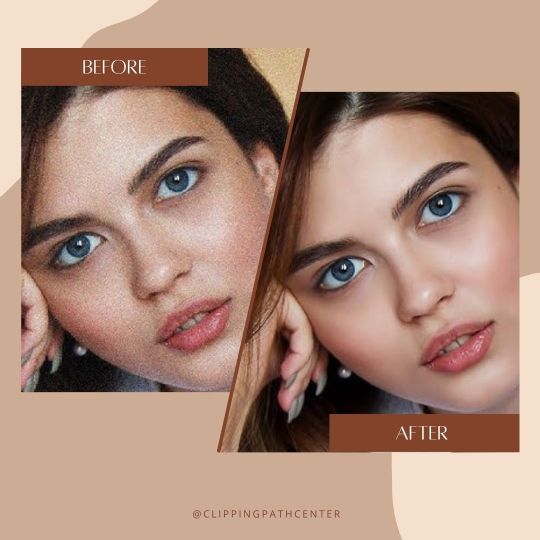
🔍 Achieve Perfectly Sharp Images
Enhance your photos effortlessly by converting grainy areas into sharper and smoother regions. Small adjustments can make huge differences!
🔌 Master Photoshop with Expert Guidance
Discover techniques such as using the Blur tool to fix imperfections. Slide adjustment tips will help refine the sharpness just how you want it.
🚀 Save Time with Professional Services
The right Photoshop service can save you hours of tedious work. Opt for experts who transform your grainy images into vibrant, noise-free masterpieces.
🛠 Outsource for Precision and Quality
Achieving grain-free detailed images can be complex. Professional clipping path services ensure your photos stand out with unmatched clarity and quality.
🔥 Boost Your Online Business with High-Quality Photos
High-quality images are key to grabbing clients' attention and boosting your online business. Don’t compromise—strive for perfection with the right Photoshop services.
#Photoshop#DigitalPhotography#ImageProcessing#ClippingPath#Outsourcing#ProfessionalPhotos#BusinessGrowth#HighQualityImages#PhotographyTips#PhotoEditing
0 notes
Text
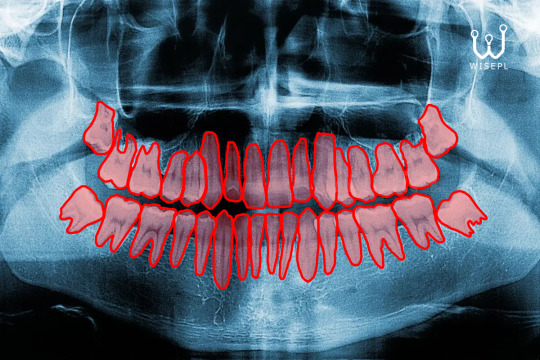
Dental Imaging with Advanced Tooth Labeling and Segmentation
Are you looking to streamline your dental data annotation process? Look no further! Our cutting-edge Tooth Labeling and Segmentation service is designed to revolutionize how you manage and interpret dental imaging data.
Why Choose Our Service? 🔹 Precision and Accuracy: Utilizing state-of-the-art algorithms, we provide highly accurate tooth labeling and segmentation, ensuring every detail is meticulously annotated.
🔹 Efficient Workflow: Save time and resources with our automated solutions that deliver fast and reliable results, allowing your team to focus on critical analyses and patient care.
🔹 Enhanced Diagnostics: Improve diagnostic capabilities with clear, segmented images that highlight key areas of interest, facilitating better treatment planning and outcomes.
🔹 Customizable Solutions: Tailored to meet the unique needs of your practice, our services are adaptable to various imaging formats and requirements.
🔹 Expert Support: Our team of experienced professionals is dedicated to providing exceptional support and guidance throughout the entire process.
Perfect for:
Dental Clinics: Streamline patient records and enhance diagnostic precision.
Research Institutions: Accelerate your research with accurate and detailed dental imaging data.
Medical Imaging Companies: Integrate our services to provide comprehensive solutions to your clients.
Transform your dental imaging data with our advanced Tooth Labeling and Segmentation service. Experience unparalleled accuracy, efficiency, and support that sets you apart in the field of dental diagnostics.
For more information or to request a demo, contact us today! https://www.wisepl.com | [email protected]
#imageannotation#dataannotation#datalabeling#medicalannotation#dentalannotation#computervision#machinelearning#imageprocessing#dentalxrayannotation#dentalxraylabeling#annotationservices#AI#wisepl
0 notes
Text
Building Base Bots with Image Processing Technology
Unlock the power of automation with our latest insights on building base bots using image processing technology. Perfect for those without a programming background, this approach simplifies the automation process by capturing screen images and performing actions based on them.
Key Features
No Coding Needed: Build bots without programming skills.
Image-Based Navigation: Navigate bots via captured screen images; updates needed for screen changes.
Advanced Features: Use auto rec and perform mouse actions based on images.
Enhanced Reliability: Use delay and image match verification to overcome challenges.
Key Insights
Simplicity & Efficiency: Image processing simplifies automation.
Maintenance Needs: Updates required as screen images change.
Improved Robustness: Delay and image match verification enhance reliability.
Dive into the world of automation with image processing technology and see how it can transform your processes!
For more information watch this training program: https://youtu.be/3vbj8PMENeU
#automation #imageprocessing #argoslabs #automation #lowcode #nocode #python #innovation #businesstransformation #usa #southasian #singapore #middleeast #india #uk
youtube
#automation#imageprocessing#argoslabs#lowcode#nocode#python#innovation#businesstransformation#usa#southasian#singapore#middleeast#india#uk#Youtube
0 notes
Text
The Top 10 Image Processing Service Companies Leading the Industry in 2025
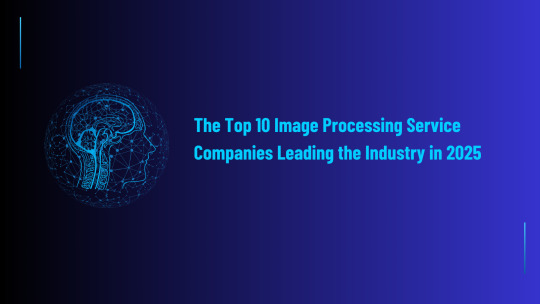
In today’s technology-driven world, Image Processing is revolutionizing industries by transforming raw visual data into actionable insights. From automating quality checks in manufacturing to enhancing diagnostic accuracy in healthcare, image processing services are pivotal in driving efficiency and innovation. Numerous companies worldwide have emerged as leaders in Digital Image Processing, leveraging advanced technologies to cater to diverse industrial needs.
Here’s a detailed look at the top 10 companies excelling in Image Processing and why they stand out in 2024.
1. Vee Technologies
Vee Technologies leads the way in offering innovative and customized image processing services for various sectors. Their expertise spans image enhancement, object detection, and remote sensing, helping industries achieve precision and efficiency.
The company is also a pioneer among Facial Recognition development companies in India, providing advanced biometric systems to enhance security and customer engagement. Vee Technologies’ contributions to Digital Image Processing India are instrumental in transforming industries such as healthcare, retail, and logistics. Their team combines technical excellence with deep industry knowledge, ensuring that clients receive cutting-edge solutions tailored to their needs.
2. Infosys
Infosys is a global IT leader with a strong foothold in Digital Image Processing. The company’s AI-driven solutions focus on applications like video analytics, 3D modeling, and image segmentation. Infosys has successfully implemented image processing solutions in sectors such as retail, automotive, and healthcare, helping businesses improve operational efficiency and customer experiences.
3. Wipro
Wipro’s image processing services are built on a foundation of innovation and cutting-edge technology. The company specializes in real-time image processing, noise reduction, and object tracking for applications like manufacturing and surveillance. Wipro’s ability to integrate AI and machine learning into their solutions has made them a reliable partner for businesses looking to modernize their operations.
4. Cognizant
Cognizant has emerged as a key player in Image Processing, offering advanced solutions like facial recognition, video content analysis, and pattern recognition. Their services are widely used in logistics, security, and e-commerce. Cognizant’s commitment to leveraging AI and data analytics ensures high accuracy and efficiency in all their image processing projects.
5. HCL Technologies
HCL Technologies is a prominent name in Digital Image Processing India, providing top-tier services for industries like healthcare, automotive, and geospatial analysis. Their offerings include 3D reconstruction, image annotation, and defect detection, helping businesses improve product quality and streamline operations.
6. Tata Consultancy Services (TCS)
TCS combines its expertise in AI, cloud computing, and Digital Image Processing to deliver innovative solutions for global clients. Their services include fraud detection, personalized marketing, and video analytics, with applications in e-commerce, finance, and public safety. TCS’s ability to handle large-scale projects with precision makes them a trusted partner for businesses worldwide.
7. Accenture
Accenture’s image processing services focus on improving decision-making and operational efficiency through AI-powered solutions. The company excels in image classification, pattern recognition, and real-time analytics, catering to industries such as logistics, healthcare, and retail. Accenture’s commitment to innovation has positioned it as a leader in delivering high-value image processing solutions.
8. Tech Mahindra
Tech Mahindra is one of the leading Facial Recognition development companies in India, providing robust image analytics and processing services. Their expertise in biometric solutions and security systems has made them a go-to partner for government projects, public safety initiatives, and retail applications. Tech Mahindra’s focus on integrating AI into image processing ensures that their solutions are both effective and future-ready.
9. IBM
IBM leverages its AI and cloud capabilities to deliver powerful Image Processing solutions. From video content analysis to object detection and image classification, IBM’s services are widely used in industries like media, healthcare, and transportation. IBM’s ability to handle complex image processing tasks with precision and efficiency sets it apart from its competitors.
10. Capgemini
Capgemini provides comprehensive image processing services, focusing on automation, accuracy, and real-time analytics. Their solutions cater to industries such as telecom, manufacturing, and logistics, helping businesses improve efficiency and reduce costs. Capgemini’s expertise in AI and data analytics ensures that their image processing services deliver tangible results for their clients.
Conclusion
The demand for image processing services continues to grow as businesses recognize its potential to drive innovation and efficiency. From enhancing security through facial recognition to improving healthcare diagnostics, Digital Image Processing is shaping the future across industries.
The companies listed above, including leaders in Digital Image Processing India and globally, are paving the way with cutting-edge solutions that cater to diverse needs. As industries evolve, the role of Image Processing in transforming operations and improving outcomes will only expand.
Whether you're a small business or a global enterprise, partnering with a reliable image processing service provider is essential to stay competitive in today's data-driven world.
#ImageProcessing#ImageProcessingServices#DigitalImageProcessing#AI#MachineLearning#DeepLearning#FacialRecognition#ImageAnalysis#ObjectDetection#VisualComputing
0 notes